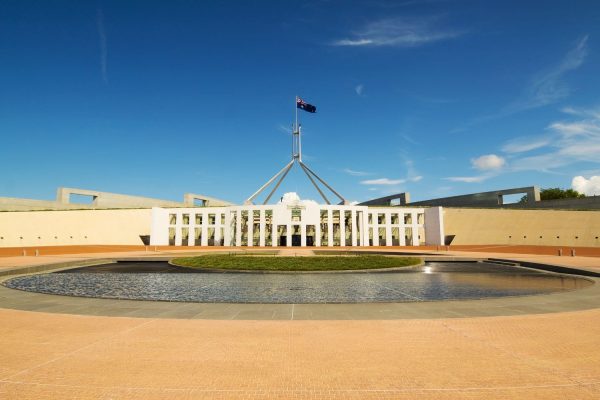Written by Timothy Bednall, Vlad Demsar, Samuel Wilson, Melissa Wheeler and Jason Pallant
The year 2020 will be remembered as one of Australia’s most turbulent. The first months of the year saw many communities devastated by the bushfire crisis. With little respite, Australia soon faced the COVID-19 pandemic, leading to a major disruption to the economy and people’s lives.
Leadership across all sectors and institutions has been tested as it never has been before. Both crises have required leaders to respond to unprecedented challenges and adapt rapidly under conditions of uncertainty. And remarkably, according to data from the Australian Leadership Index (ALI), most Australians generally regard their leaders as having risen to the challenge.
When we first started collecting data for the ALI, almost all sectors received consistently negative scores. This negativity was strongest for the government and private sectors. Except for charities, the not-for-profit sector was also rated negatively. The public sector — comprising institutions related to health, education, and justice — was the only sector to achieve consistently positive ratings.
These relatively consistent trends continued until the end of 2019. The year 2020 has fundamentally changed the way in which we perceive leaders.
Government breaks into positive territory for the first time
As we observed in April of this year, all three levels of government have received consistently negative ratings. That all changed with the onset of the COVID-19 pandemic; and far from being a temporary spike, these results have persisted throughout the year.
For the first time, the Federal Government received net positive ratings on the ALI, which have generally remained stable throughout the year. State and local governments have shown a similar increase, with perceptions continuing to improve in November.
Among those who regarded the government sector positively, many respondents indicated they approved of how the virus had been handled. In particular, they approved of how information about the virus had been communicated, government spending on people in need (e.g., the JobKeeper payment), and the cooperation between usually adversarial State and Federal Governments through the National Cabinet.
Respondents also recognised that the pandemic represented an especially challenging time for government, and they indicated a preparedness to forgive leaders for their mistakes and misbehaviour. Indeed, there is little sign that missteps and scandals — such as the Ruby Princess incident, the Victorian hotel quarantine breach, the Daryl Maguire affair, and the “Inside the Canberra Bubble” scandal — have had a lasting impact on how Australians perceive governments.
Public sector institutions seen as more important than ever
The three public sector institutions we assess in the Australian Leadership Index — the health, education and justice systems — have consistently been rated positively throughout 2020, with a large increase in approval beginning in April.
The public regarded the health sector especially positively during the COVID-19 crisis, regarding the health sector doing the best job that they could, despite perceived under-resourcing and overwork from healthcare workers. A small number of respondents expressed concerns about mismanagement of aged care facilities during the pandemic, although this did not appear to diminish the overall positive ratings of the health sector.
The education sector saw an increase in approval from April, with many respondents recognising the many challenges the sector was facing, such as adapting educational materials for online teaching and facilitating at-home schooling. For the justice sector, it is not immediately clear why perceptions improved over 2020, although many respondents praised the role of front-line police officers in maintaining public order under difficult circumstances.
Private sector ratings improved due to sympathy for small business
Overall, the private sector was the least well regarded by our respondents, although perceptions did improve from the second quarter of the year. Only small-medium enterprises (SMEs) climbed into net positive ratings, possibly due to sympathy for the losses incurred during lockdown.
The general criticism faced by the sector was that it was overly focused on profit-making at the expense of the greater good, particularly among national businesses and multinationals. For instance, some respondents criticised supermarkets for being slow to place purchase limits of items that customers tend to stockpile (e.g., toilet paper), leading to shortages among the broader community.
However, many respondents recognised the support of large organisations for their employees during the pandemic, providing valuable goods and services, and supporting the economy more generally. SMEs were recognised for playing an integral role in supporting their local communities, especially in keeping workers employed during the pandemic. Respondents also expressed admiration for their resilience and adaptability they showed when faced with significant disruptions to their business models.
The not-for-profit sector edges higher
The not-for-profit sector also showed some improvements in public perceptions over 2020. These were largely driven by increases for religious organisations, especially in the fourth quarter of the year.
Among the respondents who regarded religious institutions positively, they recognised them for their charitable work in supporting people throughout the pandemic, particularly through affiliated charities such as the Salvation Army. They also recognised their role in strengthening local communities and providing spiritual guidance. Conversely, many critics referenced the scandals faced by religious institutions, such as the trial of Cardinal George Pell.
Charities’ ratings remained consistently high from previous years, except for a dip in the first quarter of 2020. Although some respondents expressed concerns that charitable donations are lost in administrative expenses, charities continued to be highly regarded for the services they provide to the community and leadership in mobilising volunteers during the pandemic.
Perceptions regarding trade unions did not shift substantially, except for a modest increase in the fourth quarter. Among their supporters, they were recognised for their role in representing workers and advocating for fairer working conditions. However, many respondents questioned their relevance in the modern workplace, and there was little recognition for their role in supporting workers during the pandemic and criticism of insecure work.
Leadership in 2021 and beyond
The year 2020 required leaders of all institutions to adapt quickly in response to two major crises. In 2021, Australian leaders will be faced with quite different challenges.
In the short-term, leaders will need to deal with the economic and social fallout of the virus, and work to ensure that it does not gain another stranglehold in Australia.
The longer-term challenge involves planning for the future. Life is unlikely to return to “business as usual” following the pandemic. The disruption caused by COVID-19 is likely to have long-lasting effects on the world economy and the types of industries likely to thrive.
This raises a broader question: what kind of future should Australia’s leaders be guiding us towards? Envisioning a post-COVID world will require creative and courageous leadership between all of Australia’s major institutions.




